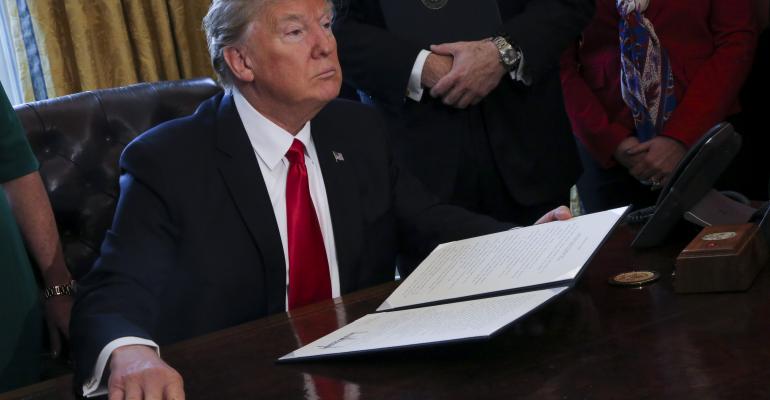President Donald Trump’s recently released infrastructure improvement plan might be a good start, but still lacks key details that could be important to the commercial real estate industry, according to some experts.
“I think it is a step in the right direction, but it’s not going to get us to where we want to be,” says Walter Kemmsies, managing director, economist and chief strategist with the ports, airports and global infrastructure group at real estate services firm JLL.
The plan seeks to stimulate $1.5 trillion in U.S. infrastructure investment—a call Trump made during his first State of the Union address. Of that, $200 billion, spread over a decade, would come from direct federal funding. The proposal puts a greater emphasis on the need for local and state governments to fund projects with private support. However, there is disagreement as to whether the proposed federal contribution would be enough to address the vast infrastructure needs across the country.
“It’s not a large number in the context of the age of the nation’s bridges and highways,” says Heidi Learner, chief economist at Savills Studley, a commercial real estate services firm, of the proposed $200 billion. In addition, it is unclear whether the government is seeking to stimulate $1.5 trillion in investment or $1 trillion—the latter of which is presented in the president’s proposed budget plan. The White House released both proposals on the same day. “There seems to be some confusion by what their forecasts really are,” Learner says.
Barbara Byrne Denham, senior economist at real estate research firm Reis Inc., also believes the federal government should be contributing more. “So much of our infrastructure serves the entire country,” she notes, adding, “Although how they pay for it is going to be a big issue.”
However, there is a benefit to putting even more of the financial burden on state and local governments, according to Kemmsies. “Pushing the funding down to the state and local governments is important to make sure we’re not building roads to nowhere,” he says.
One positive aspect of the plan, Kemmsies notes, is the call to shorten permitting times—often prohibitive to investors—to two years. “By removing the permit process uncertainty, it makes it easier for private capital to get involved,” he says.
The plan calls on broadening the use of private activity bonds (PAB) to help leverage private funds for public projects. One way this would be done, the plan states, is by allowing longer private leases and concession arrangements for PAB-financed projects, as well as by expanding the categories that can benefit from such financing.
However, Learner says more detail is needed on how it would be easier for the private sector to willingly come forward to help finance public infrastructure needs. For example, the proposal details the application requirements for the government incentives, but it is unclear what form those incentives would take, such as interest-free loans, subsidized loans or cash allocations, Learner notes. “It’s still a little light on specifics,” she says.
It also remains unclear which projects the government considers most important, Learner notes. The proposal does call to create programs to fund rural infrastructure projects and “transformative” projects, among other initiatives. However, the definition for “transformative” is not specific, she says. “I think we’re just lacking a few of the details, and there’s no sense of any initiatives that [the government is] willing to be prioritized.”
One benefit of the plan is that it outlines the need to streamline the disposal of federal assets, Learner adds. “Anything that makes that process more efficient is certainly beneficial,” she says. The plan also calls for the divestiture of federal assets to state and local entities or private investors—but it’s the private part that could be worrisome. For example, the document lists multiple transmission power assets as up for potential divestiture, but placing critical infrastructure in private hands could pose a security threat, according to Learner.
Another missing piece relates to tolls and if funds generated from tolls would be dedicated for infrastructure purposes, Kemmsies notes. For example, should tolls be raised to fund specific infrastructure efforts or will that money end up going to fund general state efforts? “Some of this is not in the infrastructure policy, but what I would like to see,” he says.
Still, the president’s proposal is just that—a proposal. It is up to Congress to help turn any idea into reality. “This is almost a white paper from the White House,” notes Kemmsies. “And what actually gets passed by Congress is different.”

